How Gothic Architecture Took Over the American College Campus
Colleges look medieval partly because of envy, industrialism, and ... racism.

The campus of Yale University, 1921. Midnight.
It is perhaps the most important job of your career. You, a successful architect, have been selected by a rich donor to build a new tower here, on your alma mater’s campus, at Yale. The tower, Gothic in style, named “Harkness,” must look archaic, timeless. It is 216 feet tall, one foot for every year since Yale’s founding. You could be building history…except that the tower does not look nearly old enough.
So you—in, presumably, a long cape, high collar, and top hat—sneak to the construction site. You pull a flask from the folds of your garment, uncork it—and throw acid onto the new granite.
The rock wears away, shows pockmarks, ages.
You have done it. You are a genius.
We know what elite American colleges should look like. Tall Gothic towers, Georgian angles and radii, and the few massive, newer slopes of Cold War modernism: It’s a collage recognizable as “college.”
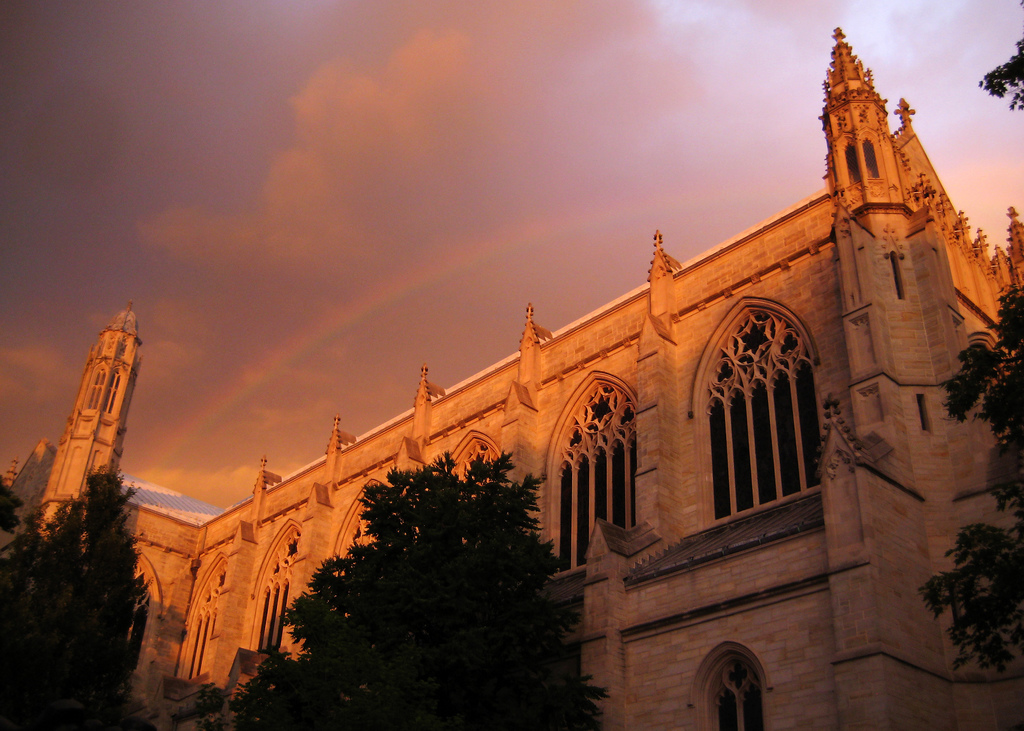
But American schools didn’t always look this way. A little more than a century ago, there was no cachet in being an “old college,” and there was little cachet, too, in having the old architecture to match it. But a combination of forces—some cultural, some economic—transformed the appearance of American institutions, and made the modern-day college campus take its contemporary appearance and mythology.
How did that happen? Who was responsible? And did a caped geometer ever toss potent hydrochloric onto a trademark New Haven edifice?
In 1888, according to historian John Thelin, administrators from the College of William & Mary came before the Virginian legislature to plead for a more stable source of funding. They argued the college’s long history earned it a bail-out in cash-poor times. The College was older than the nation: Surely this meant something.
It didn’t. The state’s General Assembly was unmoved by the college’s appeal, and elected instead to subsidize it every year.
Why did it neglect to fund the school in a more long-term way? Because, to the state, the College was less a historical treasure, and more a tool which could provide a very specific service. As Thelin writes, the Assembly’s main goal was “educating a cohort of white male schoolteachers to staff the state’s emerging public school system.”
Maybe that’s not a revealing story: State legislatures still fund schools too little and on a year-by-year basis. A half-century later, though, colleges would stake their case to donors and future students on their own long history, deep tradition and historical importance. An old university was patriotic: As Thelin writes, “Our oldest corporation … is Harvard College, not a commercial business.”
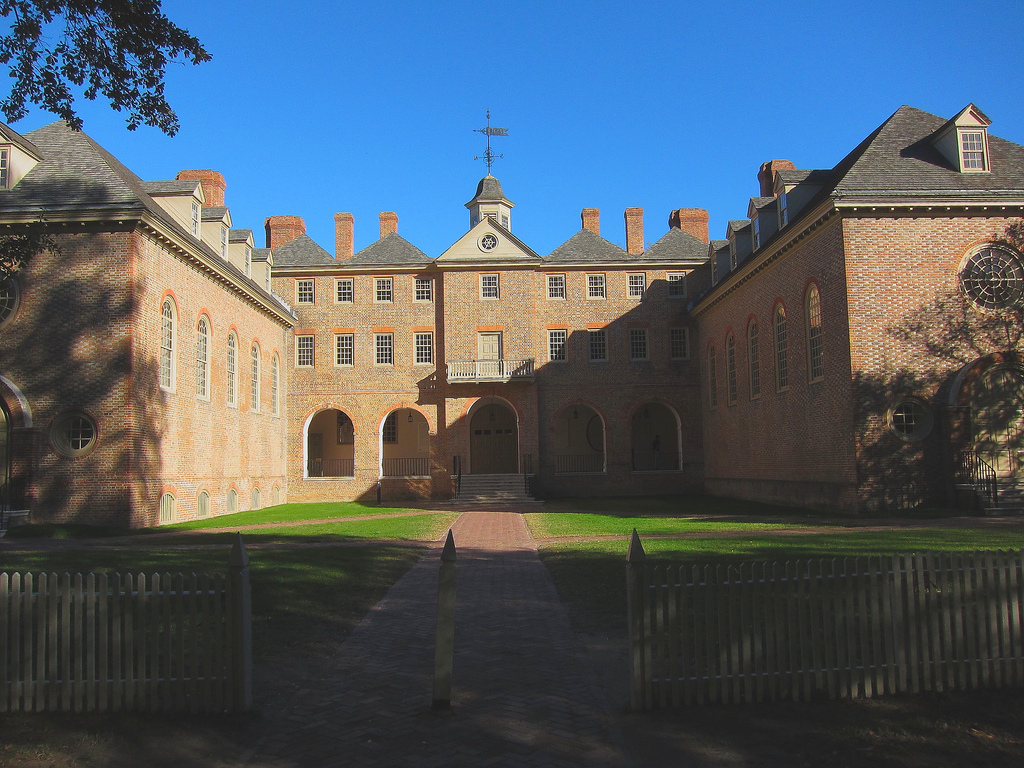
As for William & Mary’s patriotic appeal, perhaps it came a year or two too early. Thelin tracks the birth of patriotic feeling to the American centennial in 1876, and the flurry of centennials that followed it. The 1889 centennial of George Washington’s inauguration in particular spurred the formation of the Daughters of the American Revolution. Its membership ballooned in the 1890s, and it did much to boost people’s recognition of patriotism and history.
So the “old” came to be treasured. But why the Gothic?
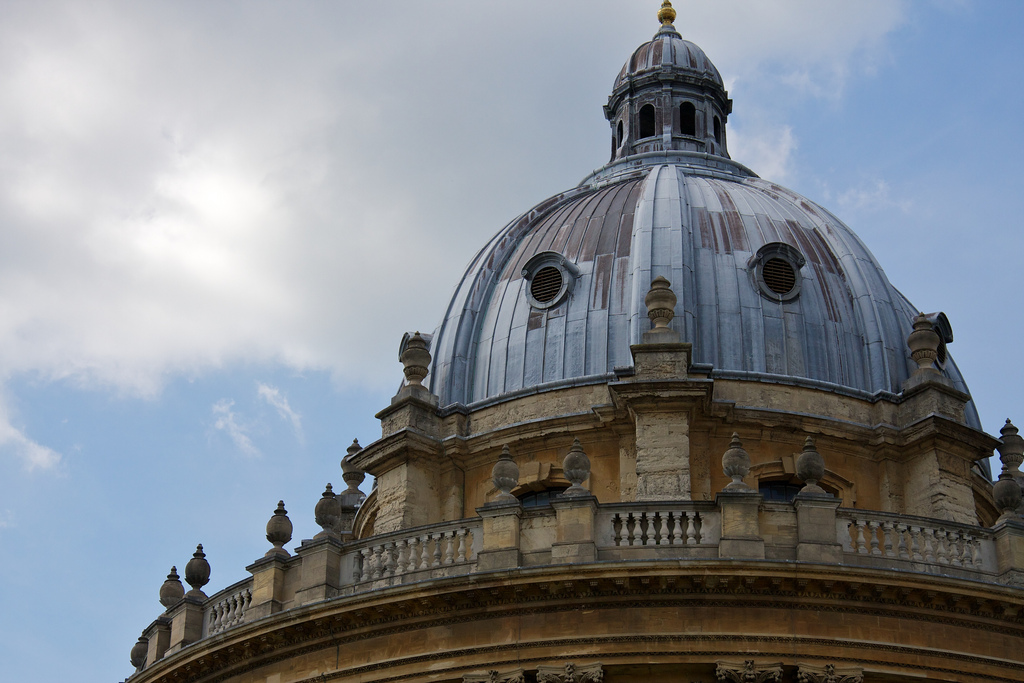
American universities had always treasured the influence of Oxford and Cambridge. The colleges that would become the Ivy League were meant to model the Oxbridgian ideal of constructing a college around a quadrangle. In practice, though, American colleges of the 18th century were quite different. They were more devoted to scholarship than their British brethren. They were disconnected from a university. And they were poorer: Often, they didn’t have enough money to complete a ring of buildings around their quad.
During the 19th century, colleges constructed new buildings often without a central plan. An alumnus or his parents might give money for a new sciences building or museum, but with the donation came the ability to pick an architect. The 19th century was a hodge-podge of styles, reflecting whatever was popular that day or whatever struck a donor’s fancy.
Even as buildings began to aspire to something “Gothic,” then, it was a decidedly ahistorical “Gothic.” Architects of the 12th and 13th century tried to solve an engineering problem: how to make a structure as tall as possible while minimizing load on the walls. They developed stained glass windows and flying buttresses as a way to build to these heights, then accented it with spires, pointed arches, and decorated portal programs.
“What Gothic meant changed depending on the time,” Johanna Seasonwein, a fellow at Princeton University Art Museum, told me. When Victorians emulated Gothic, they did it sloppily, mixing styles and idioms. “Something Islamic, something Byzantine,” might get thrown in there, says Seasonwein. This was the Victorian Gothic of the 1860s and ‘70s: a mishmash.
Collegiate Gothic, which followed Victorian Gothic, was much more precise. It emulated Oxford and Cambridge more directly.
There’s even a patient zero, of sorts, of Collegiate Gothic. In 1894, Bryn Mawr commissioned a new building, Pembroke. Its interpretation of Gothic so inspired other schools that they commissioned similar plans from the architects which designed the hall. (That firm, Stewardson & Cope, wound up constructing a near-copy of Pembroke on Princeton’s campus, where it’s called Blair Hall.)
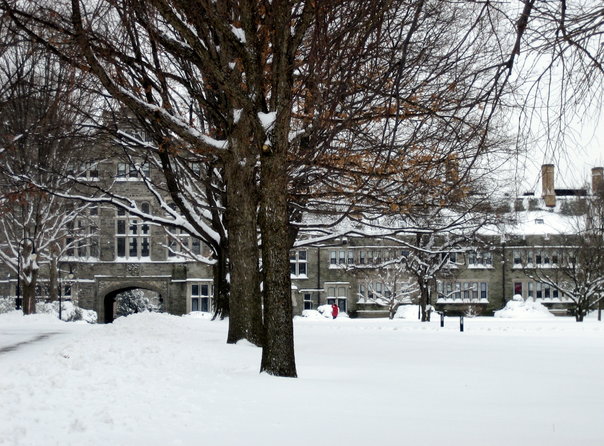
Suddenly, schools across the country were constructing in a Collegiate Gothic style.
Sometimes they built for cultural reasons. In 1896, Princeton’s trustees decided that Princeton (then the College of New Jersey) should be a world-class research institution, and, thus, that all new buildings on the campus would be in a Collegiate Gothic style. They rejected the previous century’s mishmash and mimicked Cambridge and Oxford, hard. They also began a new and massive fundraising initiative.
And money has something to do with the Gothic revival too. Between the 1890s and the 1920s, too, industrialists began supporting American higher education with gargantuan donations. While this philanthropy allowed older colleges to cop Oxford-Cambridge, it also allowed new colleges to build entire campuses in the Gothic style. “The newer the campus was,” writes Thelin, “the older it appeared to be.” The University of Chicago, for instance, bolstered by local support and $35 million donation from John D. Rockefeller (more than $900 million in 2013 dollars), fashioned a maze of towers, gargoyles and buttresses out of nothing in the city’s south side. Rockefeller’s vision was that the campus was “designed in toto,” says Seasonwein.
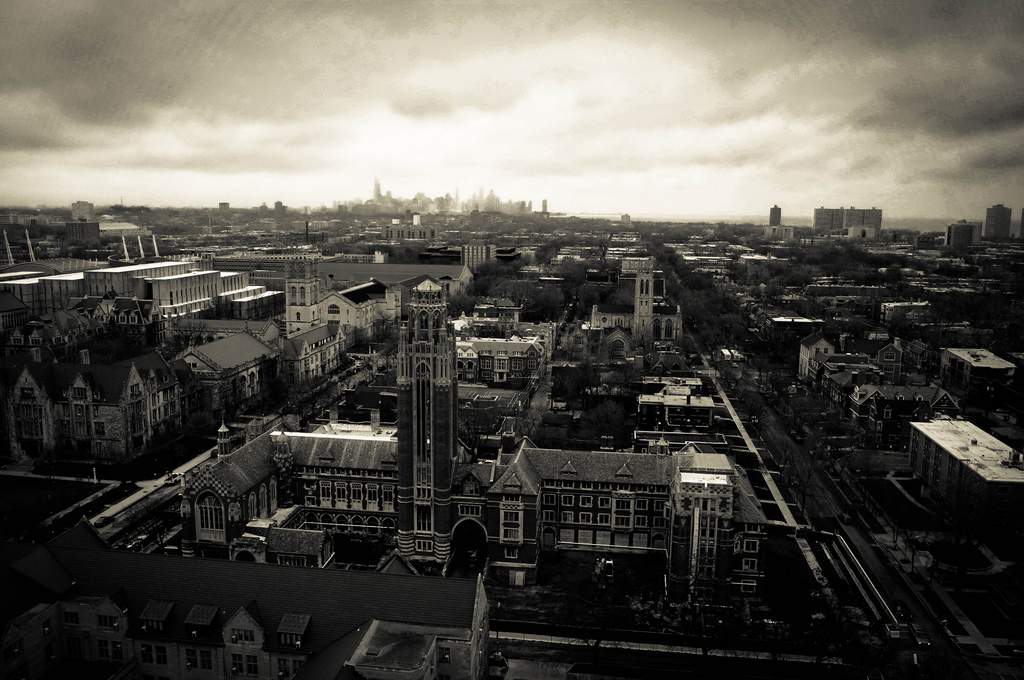
Collegiate Gothic was not a naive emulation, though. The Gothic revival “was just as much saying who was accepted in this atmosphere [of the college] as who was not,” says Seasonwein. Universities were expanding, and welcoming new students, but they were still mostly populated by WASPy men. Before the 1890s, many college presidents would have resisted a filigreed medieval style for fear it would look too “papist.”
Woodrow Wilson, when president of Princeton, has a now-famous quote about the revival: “By the very simple device of building our new buildings in the Tudor Gothic style we seem to have added a thousand years to the history of Princeton,” he said. Normally, the quote is truncated there, but in fact it continues: “…by merely putting those lines in our buildings which point every man’s imagination to the historical traditions of learning in the English-speaking race.” (Emphasis mine.)
Seasonwein called this association with racial cultural triumphalism Gothic’s “negative underbelly,” and added, “It’s not really being talked about at all.”
Sometimes donors developed favorite architects. Edward Harkness, who inherited some of the Standard Oil fortune, donated extensively to colleges and universities, including his alma mater, Yale. He chose a fellow Yalie—James Gamble Rogers—to build his commissions, and Rogers developed an American Gothic style, a mixture of different countries’s Gothic styles. Rogers built extensively in this style at Yale and Northwestern.
And it was Rogers who supposedly cast acid across Harkness Tower (named after, yes, that Harkness) to make it look more aged.
Except he never did. According to two different university archives, there is no record of Rogers casting acid on the stone. In fact, writes Judith Schiff, the Chief Research Archivist at Yale, two sources “comment on the careful selection of the stone and gradations of color from very light to medium shades.” Schiff might have heard a story about the construction workers pouring dirty water on the stone to tone down its shiny, new appearance, but no acid. In fact, she wrote to me: “I believe that the acid legend is perpetuated by Yale student guides.”
And it’s those legends that most transfix me. The American college campus, and its Gothic filigree, seem timeless, pristine constructions. Nothing could be farther from the truth: They are historical eruptions, made possible by philanthropic economics, continental envy and racism. That doesn’t detract from their inherent beauty: Rather, to think more clearly about colleges, we should recognize and adapt ourselves to their history and their contingency.